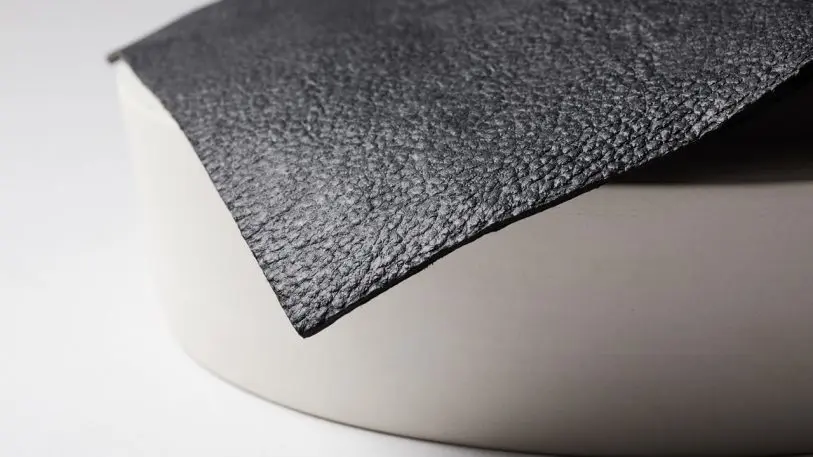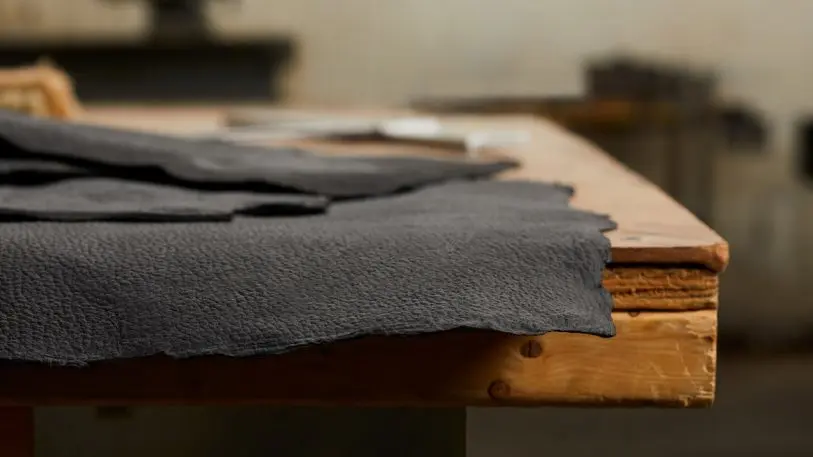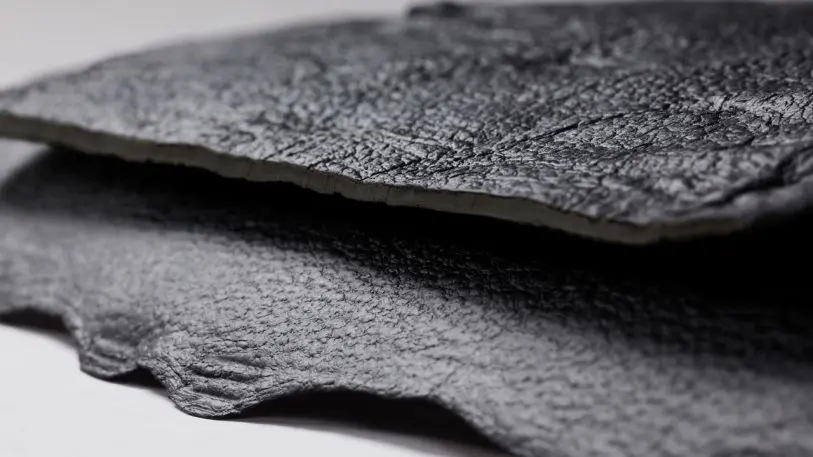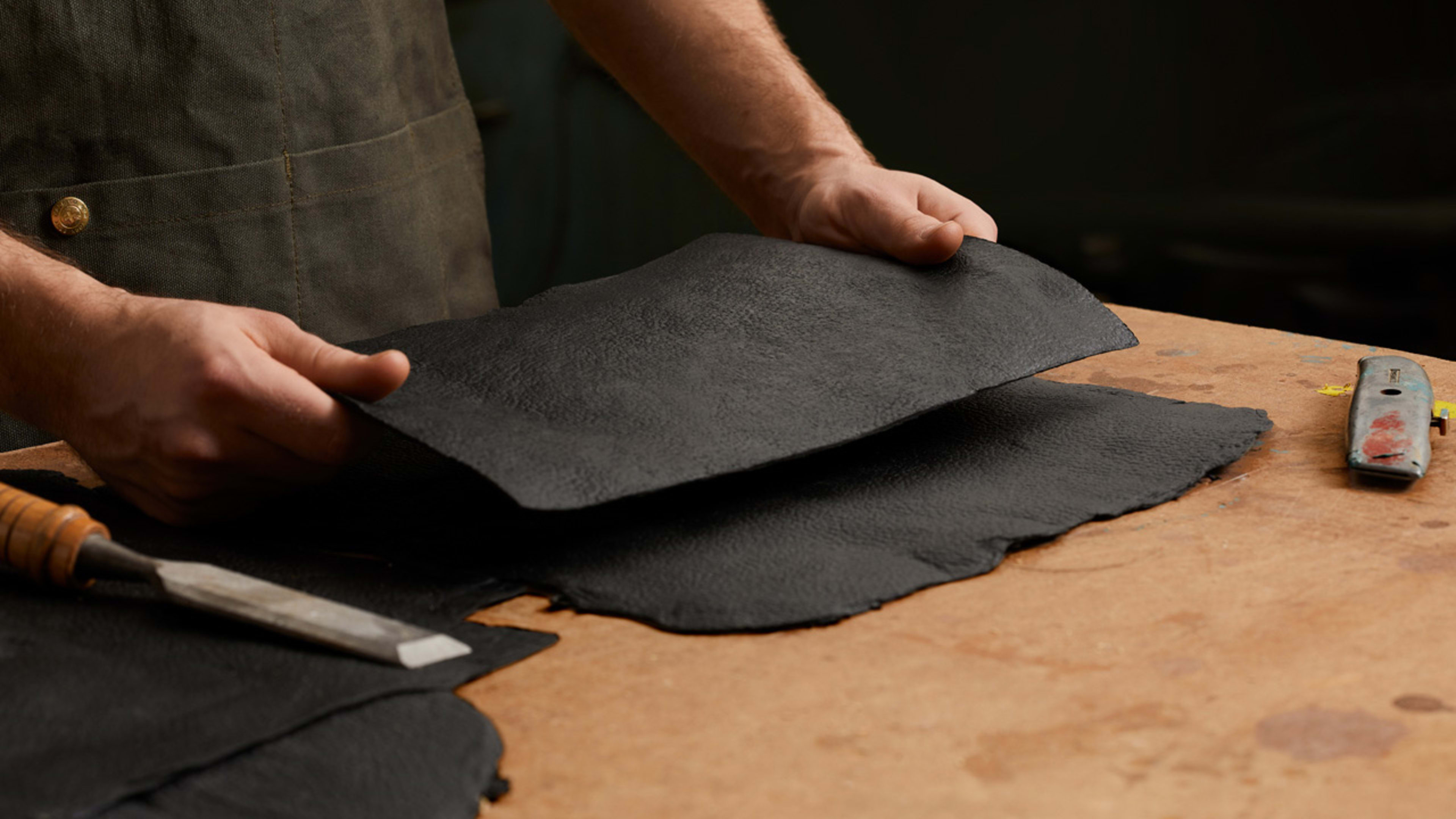In the forest, fungus slowly spreads across logs in complex, branching networks. Mycelium (the root structure of fungi like mushrooms, which sprout from mycelium) grows by absorbing nutrients from the environment, and it’s surprisingly strong and durable: A mycelial mat, when removed from a log, feels like a dense foam, with a somewhat pebbled texture.
To Dan Widmaier, founder and CEO of Bolt Threads, a startup specializing in growing next-generation fibers inspired by nature, mycelium looked quite a bit like leather.

Bolt Threads, which launched nine years ago, is best known for creating Microsilk, a polymer bioengineered to mimic spider silk, though the startup “has been working on a number of things behind the curtain,” Widmaier tells Fast Company. One of those things was Mylo–a leather-like material made from mycelium, which will go to market in the form of a luxury handbag this June. Stella McCartney, a fashion designer whose used Bolt’s Microsilk in her designs before, also crafted a sample bag from Mylo that’s currently on display at the Victoria & Albert Museum in London.
To fabricate the material, Bolt first sourced the mycelium cells and set them up on a dish in the lab. The cells grow by extending fibers called hyphae, which source cellulose-rich nutrients to eat (Bolt fed their mycelium corn stover). “Those hyphae, if you control the growth conditions like temperature, humidity, and CO2, make the body of this really dense fibrous network,” Widmaier says. “And the realization was that this fibrous network looks like of like the fibrous network in a nonwoven mat, like leather.”
Once the mycelium grows large enough, “we cut it into slices, and it goes through a process not dissimilar to how animal hides are tanned to become leather, except it’s more environmentally friendly,” Widmaier says. The specifics of that process are mostly proprietary to Bolt, but what renders the process less environmentally damaging, Widmaier says, is in part because mycelium doesn’t rot like animal hide does, and as such, does not need to be treated with the copious amounts of salt and chemicals to prevent it from disintegrating that goes into leather production.

The mycelium-based leather is also generally far more sustainable than animal leather. On its own, it’s biodegradable, though Widmaier clarifies that the Mylo would have to be separated from the other aspects of a handbag (McCartney’s, for instance, is lined with chain metal) in order to naturally erode. And compared to sourcing leather from cattle, which requires the continuation of factory farming, growing mycelium in a lab is relatively renewable and low-impact process.

In that sense, Mylo is similar to other biofabricated leather alternatives currently making their way to market. Modern Meadow, a New Jersey-based startup, has developed Zoa, a liquid leather-like substance grown from collagen, which can be shaped into any form and, like Mylo, tanned to resemble leather, while eliminating leather processing’s most harmful effects. Suzanne Lee, chief creative officer for Modern Meadow, says Zoa-based products will be available by early 2019. Mylo differs from Zoa in that it’s grown in large sheets and cut to form products, whereas Zoa is poured into precise molds, though it’s also possible that mycelium could be grown in molds to form the shape of a garment or accessory.
While biofabricated leather still is just a tiny share of the overall leather market, it’s growing, and investors are eager to support it: Bolt Threads closed a $123 million funding round in January. But Widmaier isn’t worried about competition among the various startups in this space. “The challenge here is one of sustainability on a global scale,” he says. The clothing industry produces somewhere between 80 and 100 billion pieces of apparel each year. “We should maybe get on doing something about that,” he adds. “The market is huge, and if anything I wish there were more companies working in this space.”
Recognize your brand’s excellence by applying to this year’s Brands That Matter Awards before the early-rate deadline, May 3.
